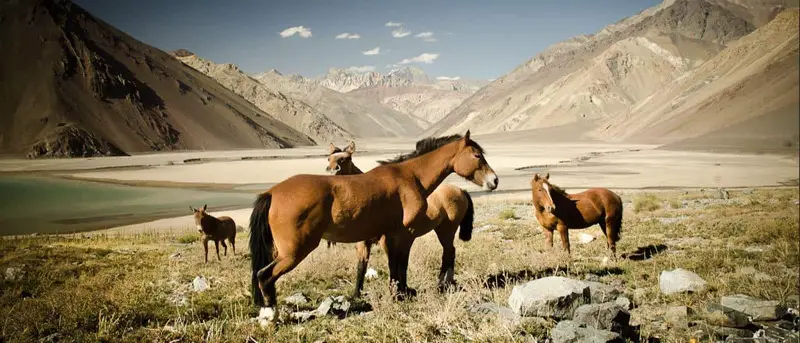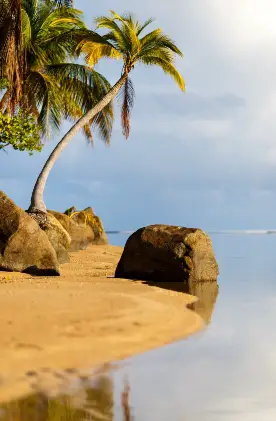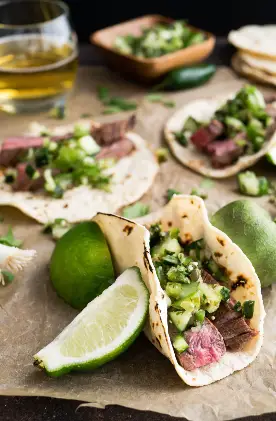The Seven Summits are the highest peaks of each of the seven continents and include: Everest, Kilimanjaro, Denali, Aconcagua, Vinson, Elbrus, and Kosciuszko or Puncak Jaya (depending on how you define the continents). Climbing to the top of these epic mountains, plus reaching the North and South Poles, is considered the “Explorers Grand Slam”. Learning how to summit Mount Aconcagua is a key part of these bucket list challenges.
The tallest mountain of South America, located in the Mendoza province of Argentina, is usually attempted after Kilimanjaro or Elbrus for those trying to summit them all. Aconcagua stands at 6,961 meters, making it the second tallest of the Seven Summits behind Everest. Although it’s not as technical as Denali or Vinson, the altitude of Aconcagua – mixed with unpredictable weather conditions – means it’s no walk in the park.
Under no circumstances should this be your first mountain trek. Altitude can be unforgiving if you are not acclimatized and the only way to cure a serious case of altitude sickness is to head to lower ground. If you want to give Aconcagua a crack, we suggest going on some practice treks in Kilimanjaro or Everest Base Camp beforehand. Once you are comfortable at heights over 5,000 meters then Aconcagua becomes a real possibility.
To commit your precious time, money and effort into knocking off one of the world’s Seven Summits – you want to feel assured that you have a good chance of success as a mountaineer. That is why we recommend booking with Grajales Expeditions who can guide you on a safe and successful expedition, with all the logistics and planning organized, so you can focus entirely on the task at hand: summiting Aconcagua for the first time.




Why Book a Guided Expedition of Aconcagua with Grajales
Grajales Expeditions is named after a legendary local mountaineer named Fernando Grajales. He was the first person to form a guiding company for South America’s tallest mountain, back in 1976, after falling in love with this Andean apex. Today, his family-owned business has led over 550 summits of Aconcagua over a 45 year period. Mountaineers from around the world come to Grajales for their high-class guides, infrastructure and logistics.
No less than 17 guides work for Grajales and together they have climbed the mountain on more than 600 occasions. They understand Aconcagua like the back of their hand and know how to treat it with the respect that it deserves. Alongside the guides is a crew of porters whose job is to transport gear from Base Camp to High Camp. Their role in an expedition is crucial: carrying the load so climbers have less weight on their shoulders.
Since Grajales own the infrastructure that they use, expeditions run with a greater deal of certainty and flexibility if needed. All camps are equipped with clean drinking water, fresh food provided on a daily basis, hot showers (believe it or not), free Internet, power supplies, storage and heated dining domes. They even own (and take care of) over 100 mules which are relied upon for transporting gear to the Base Camp in a secure manner.
Logistics is another big component to the Grajales offering. Their logistics center at Penitentes (the starting point for Aconcagua ascents), rather than hundreds of kilometers away, gives mountaineers access to a range of lockers, storage, vehicles and drivers. Getting here and back in a reliable way makes the entire Aconcagua experience that much easier. And with three unique routes to choose from, there is no better company to go with.




How to Summit Mount Aconcagua – Three Possible Routes
With Grajales you can expect to hike winding trails in the Andean Valley, witness impressive mountain landscapes, breathe in the cool and thin air, and be part of an international community of mountaineers who gather at the camp sites. It’s a once in a lifetime adventure that you will never forget. But before heading off, one of the most important factors when deciding how to summit Mount Aconcagua is choosing an appropriate route.
The three routes which Grajales lead are the Normal Route, Polish Traverse Route and Polish Glacier Route. Each of these routes takes 18/19 days and offers spectacular scenery. All three itineraries include time spent in the city of Mendoza (at both the start and finish where you will enjoy a pick-up and drop-off service) and a couple of spare days when summiting the mountain just in case the weather gods decide to make conditions tricky.
Dates for these routes have been set for the 2022/2023 season and all fall between November – February. The Normal Route is a non-technical but challenging climb in the Horcones Valley. It begins at the Horcones trailhead and winds up to the Plaza de Mulas Base Camp and three higher camps called Plaza Canada, Nido de Condores and Colera. Day 14 is summit day. A lot of this route involves acclimatizing to prepare for the grand finale.
The Polish Traverse Route or the 360 Route gives mountaineers the opportunity of circumnavigating Aconcagua and taking in the mountain views from different perspectives, as they ascend via the Vacas Valley and descend via the Horcones Valley. The third and final option is the Polish Glacier Route – the toughest but most rewarding of the routes. It features snow and ice at heights of over 6,000 meters similar to the Himalayas.




Less Strenuous Trekking Opportunities at Mount Aconcagua
Not everyone is willing to attempt the summit on their trip to Argentina, so luckily the team at Grajales have put together some less strenuous hiking programs around the same beautiful mountain. These treks would suit adventurous types who don’t have the time, altitude readiness or experience to tackle a summit. Spanning from four to seven days, you will be pleasantly surprised by the variety of alternative hikes on offer.
The Aconcagua Base Camp Trek is one of the most popular options for folks not quite prepared for the grueling summit peak. About a week of trekking awaits on this journey as you reach a max altitude of 5,000 meters. The main highlights are visiting Plaza de Mulas, seeing Aconcagua’s South Face, having mules carry most of your gear, and an optional extra of flying out of the Base Camp by helicopter and admiring a birds eye view.
Perhaps the most fascinating experience of them all is the Horse Andes Crossing. It lasts for seven days and follows a historic trail beginning in Mendoza and finishing in Santiago. You can either go by horse or hike. Portillo Argentino is a high pass which connects with an old trail that was once used by figures such as Charles Darwin and General San Martin. The trail descends into a valley where the gaucho lifestyle is still alive and well.
A short and sweet hike that even your average backpacker could do is the Aconcagua South Face Trek. With a max altitude of 4,050 meters, and no more than 15 hours of trekking spread out over four days, you don’t have to be a fitness guru to enjoy it. The Plaza Francia viewpoint is where you can marvel at the wall of ice that forms the South Face. If you aren’t sure which expedition would suit you best, contact Grajales who will be happy to help.




Tips on How to Summit Mount Aconcagua for the First Time
Whether you are looking to achieve the Seven Summits feat or just want to mix things up on your backpacking trip, there is no better way to learn how to summit Mount Aconcagua than by booking an expedition with Grajales. As long as you come with the right training and mindset, a successful summit is all but guaranteed. Preparation is key when attempting something of this caliber, so here are some tips to keep in mind.
During the peak season, permits are required for climbing and trekking in Parque Provincial Aconcagua. Rangers stationed at checkpoints will ask to see permits before you can embark. So there is no getting around the issue of permits. All the expeditions with Grajales include permits which is a bonus to booking directly with them. Just remember that the permit prices can change year to year and rates are lower for Argentine nationals.
In the rare event that you need to leave the expedition due to illness or injury, make sure you have some spare funds available to pay for the guide, porters, mules, transfers, etc. on your way down. All extra costs incurred by the climbers need to be paid for as there is no other possible way to run a financially viable expedition company. As a general rule, you want to bring some cash with you anyway to pay for additional porters, tips or beverages.
Packing correctly will also make your life easier on the mountain. Ensure you have an expedition backpack, a small day pack that goes with it and two large duffel bags because your gear will need to be separated into two: one for the hike to Base Camp and the other for your altitude gear. The main reason for this is around the coordination of mules. Lastly, note that the group sizes with Grajales are small so you can enjoy an intimate trip.



























